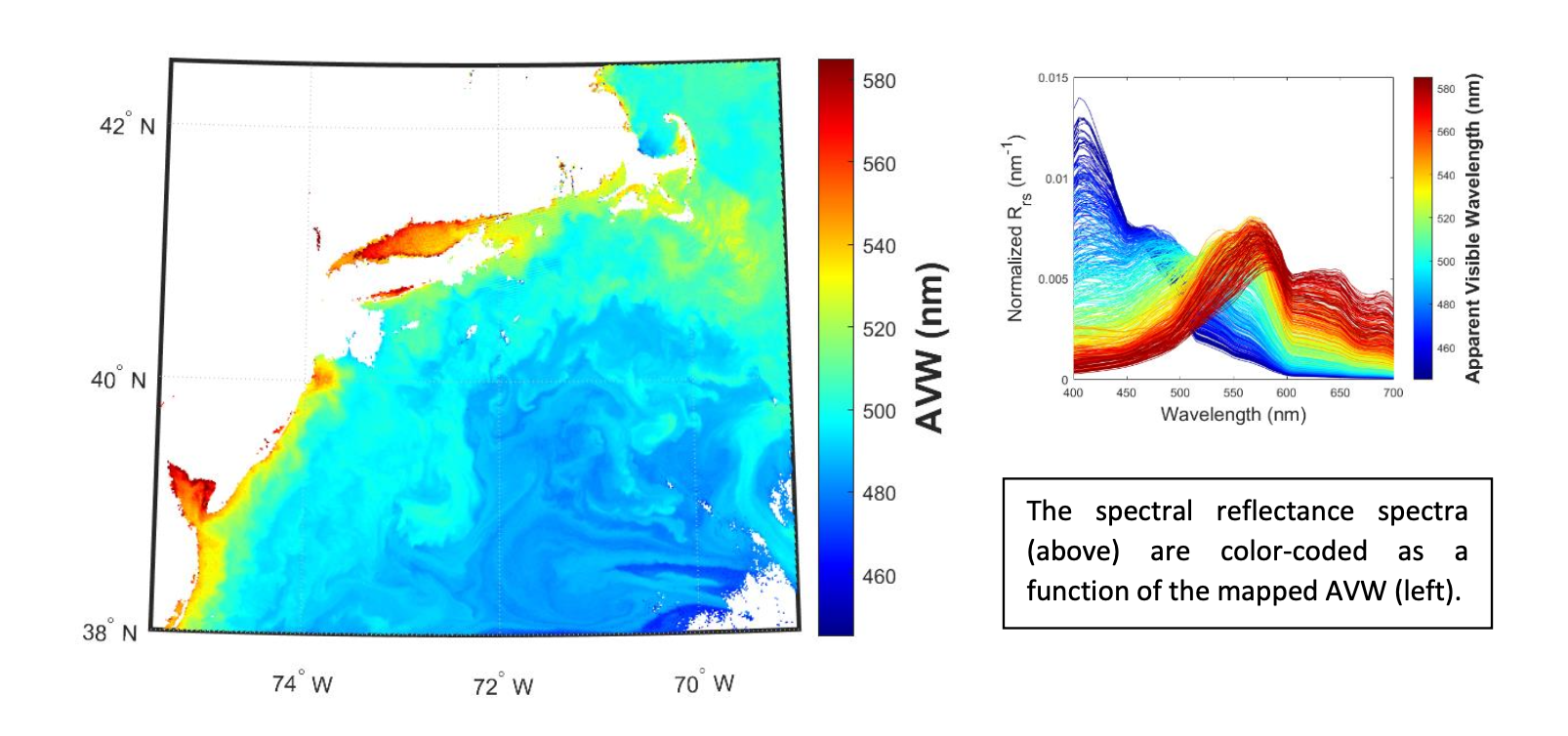14 Apparent Visible Wavelength (AVW)
What is it?
The Apparent Visible Wavelength (AVW) is an optical water mass classification index that is sensitive to changes in the water’s reflectance spectrum. Since the entire visible-range spectrum is utilized in the calculation of AVW, this product ensures that any diagnostic signals present in the reflectance signal are considered, and affords the opportunity to describe and analyze subtle shifts in color.
How does it impact Aquaculture/Fisheries?
Unlike other ocean color products, the AVW is not a derived geophysical variable, but instead an objective descriptor of the ocean’s color. This makes it impervious to algorithm-induced biases, and thus useful and consistent across optically complex environments. This is a useful monitoring tool to assess if there are any changes to the color of the water, and if so, what direction the color is shifting (i.e. more red or more blue). While the attribution/cause of shifts in the water color are not elucidated with the product, it serves as an early indicator to detect changes in the optical water properties.
What are the limitations/caveats?
This product relies on the accuracy of remote sensing reflectance products, which are subject to uncertainties introduced in the removal of the atmospheric signal.
Does HYPERSPECTRAL directly improve/enable this product?
This product was developed specifically for hyperspectral applications, but can be “calibrated” for multi-spectral sensors to provide time-series continuity. PACE is the first mission to offer AVW as a product under “provisional” status.

Python
%%time
# Authenticate to NASA
import earthaccess
auth = earthaccess.login(strategy="interactive", persist=True)
# (xmin=-73.5, ymin=33.5, xmax=-43.5, ymax=43.5)
bbox = (-75.5, 38.0, -69.0, 42.5)
import earthaccess
results = earthaccess.search_data(
short_name = "PACE_OCI_L2_AOP",
temporal = ("2024-05-13", "2024-05-13"),
bounding_box = bbox
)
fileset = earthaccess.open(results);
# load data
import xarray as xr
ds = xr.open_dataset(fileset[0], group="geophysical_data")
# Add coords
# Add coords
nav = xr.open_dataset(fileset[0], group="navigation_data")
nav = nav.set_coords(("longitude", "latitude"))
wave = xr.open_dataset(fileset[0], group="sensor_band_parameters")
wave = wave.set_coords(("wavelength_3d"))
dataset = xr.merge((ds["avw"], nav.coords, wave.coords))
# Subset
avw_box = dataset.where(
(
(dataset["latitude"] > 38.0)
& (dataset["latitude"] < 42.5)
& (dataset["longitude"] > -75.5)
& (dataset["longitude"] < -69.0)
),
drop = True
)# make one plot
import matplotlib.pyplot as plt
plot = avw_box["avw"].plot(x="longitude", y="latitude", cmap="jet", vmin=450, vmax=580)
# Set x and y limits
plot.axes.set_xlim(-75.5, -69.0)
plot.axes.set_ylim(38.0, 42.5)
# Customize colorbar label
plot.colorbar.set_label("AVW (nm)", fontsize=16, fontweight="bold")
plt.show()